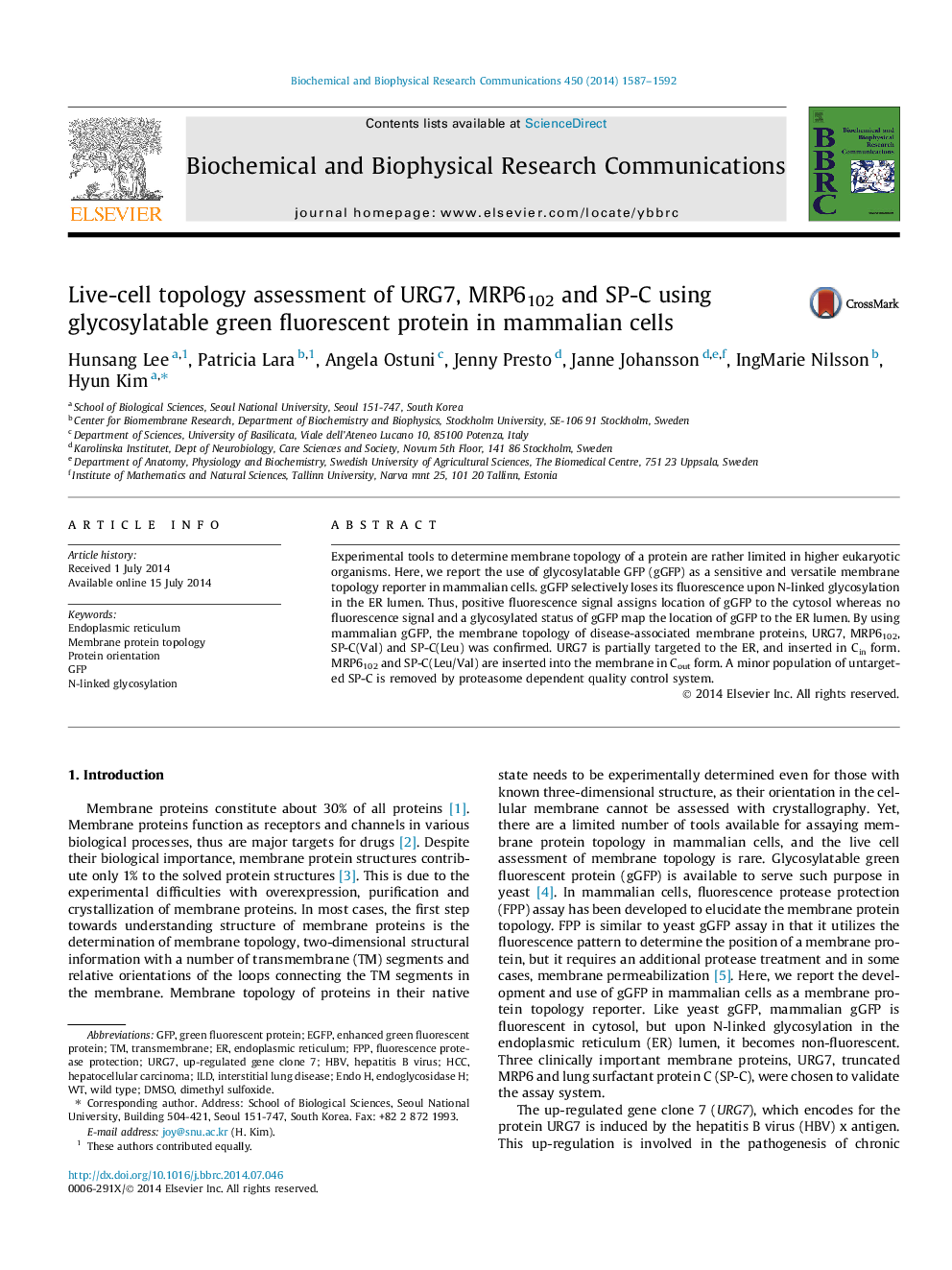| Article ID | Journal | Published Year | Pages | File Type |
|---|---|---|---|---|
| 8297500 | Biochemical and Biophysical Research Communications | 2014 | 6 Pages |
Abstract
Experimental tools to determine membrane topology of a protein are rather limited in higher eukaryotic organisms. Here, we report the use of glycosylatable GFP (gGFP) as a sensitive and versatile membrane topology reporter in mammalian cells. gGFP selectively loses its fluorescence upon N-linked glycosylation in the ER lumen. Thus, positive fluorescence signal assigns location of gGFP to the cytosol whereas no fluorescence signal and a glycosylated status of gGFP map the location of gGFP to the ER lumen. By using mammalian gGFP, the membrane topology of disease-associated membrane proteins, URG7, MRP6102, SP-C(Val) and SP-C(Leu) was confirmed. URG7 is partially targeted to the ER, and inserted in Cin form. MRP6102 and SP-C(Leu/Val) are inserted into the membrane in Cout form. A minor population of untargeted SP-C is removed by proteasome dependent quality control system.
Keywords
Related Topics
Life Sciences
Biochemistry, Genetics and Molecular Biology
Biochemistry
Authors
Hunsang Lee, Patricia Lara, Angela Ostuni, Jenny Presto, Janne Johansson, IngMarie Nilsson, Hyun Kim,
